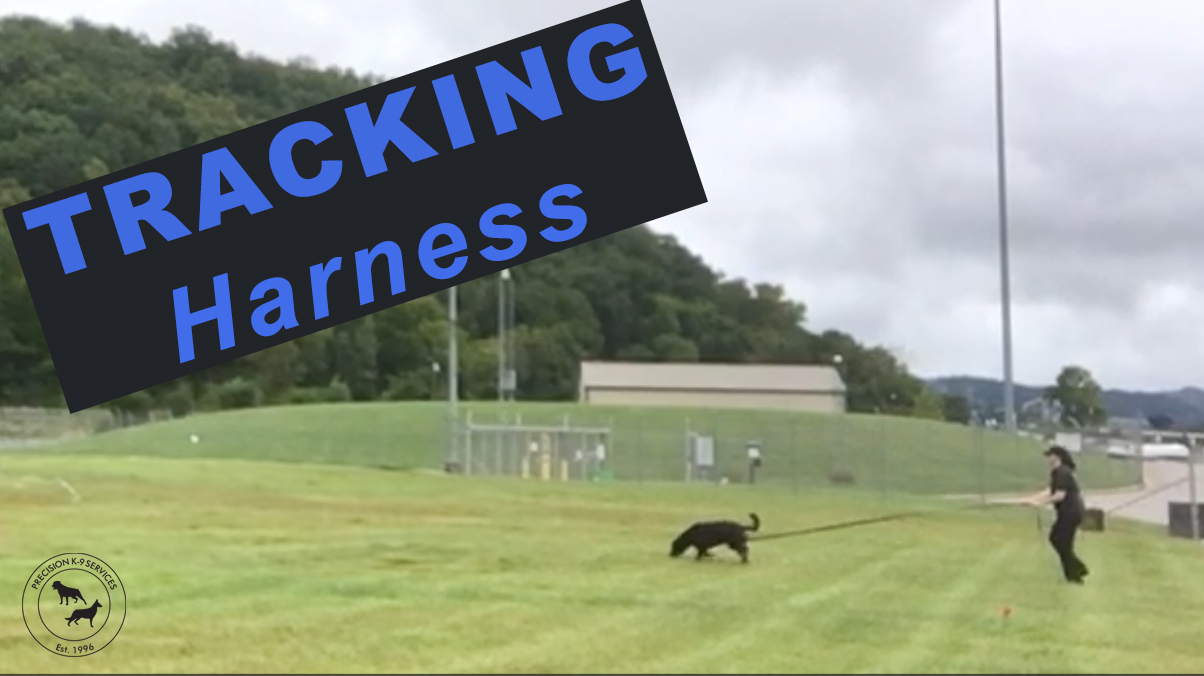TRACKING HARNESS FOR YOUR DOG
In SchH/IPO/IGP you may choose to not even use a harness for tracking!
Type Of Harness
In my 30 years in the dog training world, I have seen several types of tracking harnesses used during tracking. For the most part, the type of tracking harness that is used does not matter. In normal sport dog situations, a harness will not be worn for a great deal of time. Also, the durability and ruggedness of the product will not matter. However, there are a few things to consider.
Is this a dangerous situation? If you are a Police Officer or a Sport Dog handler with a high-drive canine that is tracking a live person, the ruggedness of the product needs fine detail. All leather harnesses, metal buckles, and metal attachment points are a must. Plastic snaps will eventually fail, which can put you in jeopardy of losing your canine or putting your high-drive partner in a bad situation.
How long will your canine potentially wear this device? Tracking for long distances (Search and Rescue, Police K-9, etc.) can cause chafing on your dog. Make sure your dog has a harness that has padding to alleviate the wear. Also, size the harness correctly. A tight harness can obstruct the dog’s breathing and dexterity. A loose harness will cause chafing on the dog and, at worst, will allow the dog to separate from the handler.
Cost
What is your budget? In most cases, if you are paying less than $40, I would question whether you are buying anything of value. Make sure you research the product and read reviews. If you are law enforcement, ask your trainer or other officers. For sport dog owners, your local club should have good information.

We have typically used a Ray Allen or Signature K-9 harness like this one. It has never failed us or our customers. I would always recommend this harness for anyone training a working dog.
What about Obedience?
I do not recommend using a harness for obedience training and only use it sparingly in protection work. Just remember this piece of equipment is designed to allow the dog to pull into it without causing it to tire or feel discomfort. This can make it difficult to train a young dog to heel with it on. During protection work it can be used to extend a young dog’s training session since it is designed to keep it from tiring. However, it can be a detriment in some situations while teaching control work.
Final Thoughts:
Choosing the right tracking harness for your dog is crucial for ensuring their safety and comfort during high-stakes situations. By considering factors such as durability, fit, and budget, you can make an informed decision that will benefit both you and your canine partner. Remember, a well-chosen harness can make all the difference in your dog’s performance and well-being. Happy tracking!
We hope you love the products we recommend!
Just so you know as an Amazon Associate I may earn
from qualifying purchases.
Thank you if you use our links on this page, we
really appreciate it!!

